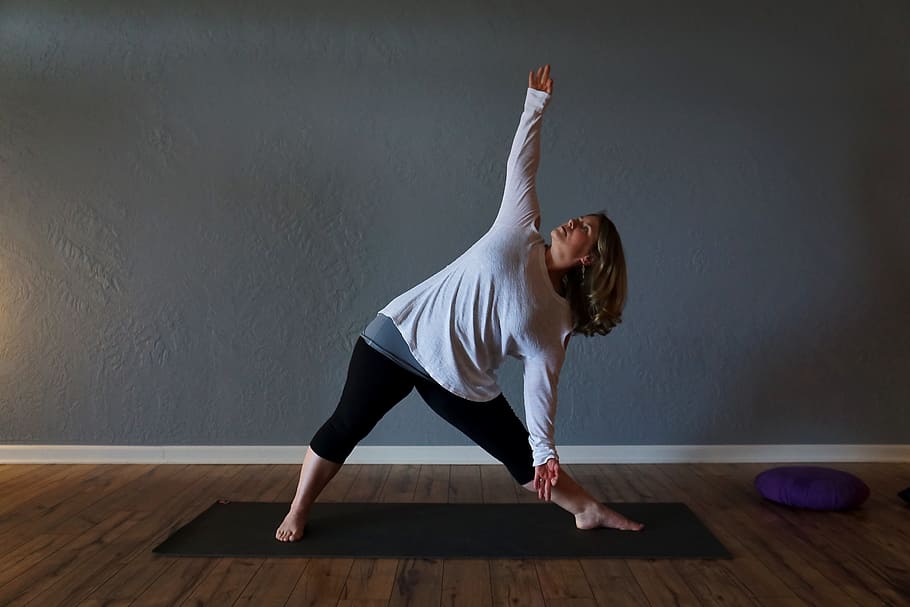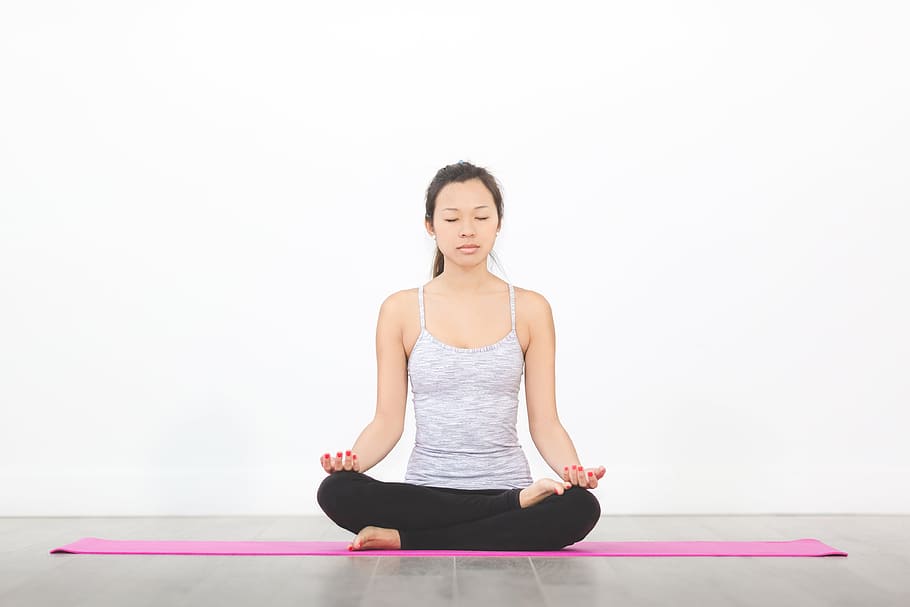In our fast-paced world, our own physical well-being often takes a backseat. But regular exercise is crucial for both our physical and mental health. So, how much exercise do we really need?
Join us as we explore exercise guidelines. Here, we’ll uncover the benefits and help you tailor an exercise routine to your needs!
Understanding Exercise Guidelines
Exercise is a multi-faceted journey that encompasses various types of physical activities. To make the most of your fitness routine, it’s important to grasp the fundamentals.
In this section, we’ll explore the different types of exercise. Plus, the recommended amounts for diverse age groups and fitness levels.
Types of exercises
 (Image Credit: Wallpaper Flare)
(Image Credit: Wallpaper Flare)
- Aerobic exercises: These activities get your heart pumping and improve cardiovascular endurance. Examples include brisk walking, running, swimming, and cycling.
- Strength training: This exercise aims to build muscle strength and endurance. It involves using resistance, such as resistance bands, to challenge your muscles. Exercises like lifting weights, push-ups, and squats fall into this category.
- Flexibility exercises: Stretching exercises enhance your range of motion. This also helps keep your muscles and joints supple. Activities like yoga, Pilates, and static stretching promote flexibility.
- Balance exercises: These exercises help improve stability and reduce the risk of falls. They involve activities like standing on one leg and using balance boards.
Recommended exercise amounts
The ideal amount of exercise varies based on factors such as:
- age
- current fitness level
- overall health
But there are some general guidelines recommended by experts:
- Children and adolescents (ages 6-17). At least 60 minutes of moderate to vigorous physical activity daily. This includes aerobic and muscle-strengthening exercises.
- Adults (ages 18-64). Aim for at least 150 minutes of moderate-intensity aerobic exercise. Or 75 minutes of vigorous-intensity aerobic exercise each week. Incorporate muscle-strengthening activities at least twice a week.
- Older adults (65 years and older). Follow the adult guidelines. At the same time, focus on activities that improve balance and prevent falls.
Understanding these is key to creating a well-rounded fitness routine that aligns with your goals and needs.
Tailoring Exercise to Individual Needs
 (Image Credit: Wallpaper Flare)
(Image Credit: Wallpaper Flare)
When it comes to exercise, one size doesn’t fit all. Thus, tailoring your exercise routine to your individual needs is essential.
Factors to consider
When designing your exercise regimen, consider the following:
- Age: Different age groups have different physiological needs and considerations. Adjust your exercise routine accordingly.
- Health condition: Take into account any existing health conditions or limitations. Consult with a healthcare professional if needed.
- Goals: Clearly define your fitness goals. Is it weight loss, improving strength, or increasing flexibility? This will help shape your exercise routine.
Understanding exercise intensity
Exercise intensity refers to the level of exertion during physical activity. It determines the appropriate duration and frequency of your workouts.
Higher-intensity workouts generally require shorter duration and more rest. Lower-intensity workouts, in contrast, can be performed for longer periods.
The Benefits of Regular Exercise
Regular exercise can positively impact both our physical and mental well-being. In this section, we’ll specifically focus on the following benefits:
1. Weight management
Exercise helps control body weight and prevent weight gain. For one, engaging in physical activity increases calorie expenditure. This contributes to a negative energy balance, which is essential for weight loss.
Exercise also helps build lean muscle mass. This, in return, boosts metabolism and promotes the burning of calories even at rest.
2. Cardiovascular health
Regular exercise strengthens the heart muscle, improves circulation, and enhances overall cardiovascular health. Aerobic exercises, such as running, swimming, and cycling, increase heart rate and breathing. This reduces the risk of cardiovascular diseases, including:
- heart attacks
- strokes
- high blood pressure
3. Bone density
Weight-bearing exercises are instrumental in improving bone density. These include walking, dancing, or strength training. These activities stimulate the bones, triggering a natural process that strengthens them.
Engaging in regular exercise can help reduce the risk of osteoporosis.
4. Stress reduction
 (Image Credit: Wallpaper Flare)
(Image Credit: Wallpaper Flare)
Physical activity is a natural stress reliever, stimulating the production of endorphins. Moreover, regular exercise has been shown to:
- improve overall mental well-being
- alleviate symptoms of anxiety and depression
- promote better sleep quality
5. Cognitive function
Exercising has profound effects on cognitive function and brain health. It enhances blood flow to the brain, which can improve overall cognitive performance. Regular exercise has also been associated with a reduced risk of neurodegenerative diseases. Take Alzheimer’s disease, for example.
Finding the Right Exercise Routine
Exercise is not limited to a single routine. There are countless options to explore, including:
- Cardiovascular activities: Running, swimming, dancing, cycling, or participating in group fitness classes.
- Strength training: Weightlifting, bodyweight exercises, resistance band workouts, or using weight machines.
- Flexibility and mind-body activities: Yoga, Pilates, tai chi, or stretching routines.
- Outdoor activities: Hiking, cycling, gardening, team sports, or simply enjoying nature.
Repeating the same exercises and routines over time can lead to reduced motivation. To avoid plateaus, keep the following strategies in mind:
- Mix different types of exercises, and change intensity levels. Or try new activities to challenge your body in different ways.
- Establish specific goals, such as increasing endurance or mastering new yoga poses. Track your progress to stay motivated and measure improvements.
- Engage in a combination of cardiovascular activities, strength training, and flexibility exercises. This allows you to work different muscle groups and enhance overall fitness.
- Alternate between high-intensity bursts and periods of active recovery. This helps boost calorie burn, improve endurance, and keep workouts engaging.
Round-up
Determining the ideal amount of exercise for optimal health is a personal journey. In this blog, we’ve explored various factors that can help in finding the right balance for you.
But note that finding the ideal exercise routine isn’t just about pushing yourself to the limits. Rest and recovery play a crucial role in your overall health.
Start small, set achievable goals, and gradually increase your intensity and duration. Choose activities you enjoy, and don’t be afraid to explore different options. Consistency is key.
So, seize the opportunity to make a positive change today. Lace-up your sneakers, take that first walk, or try that new fitness class!



 (
( (
( (
(